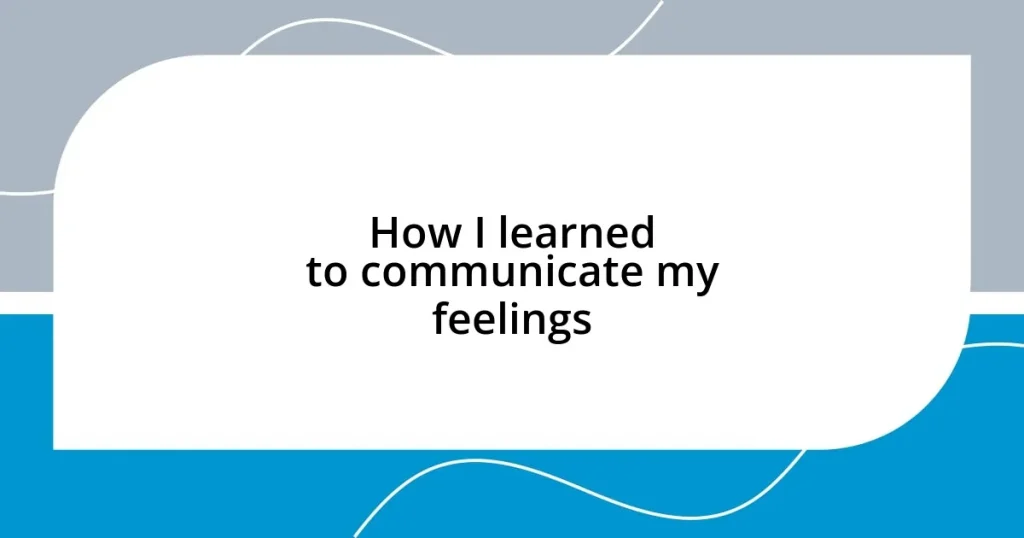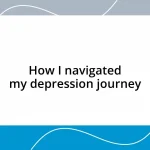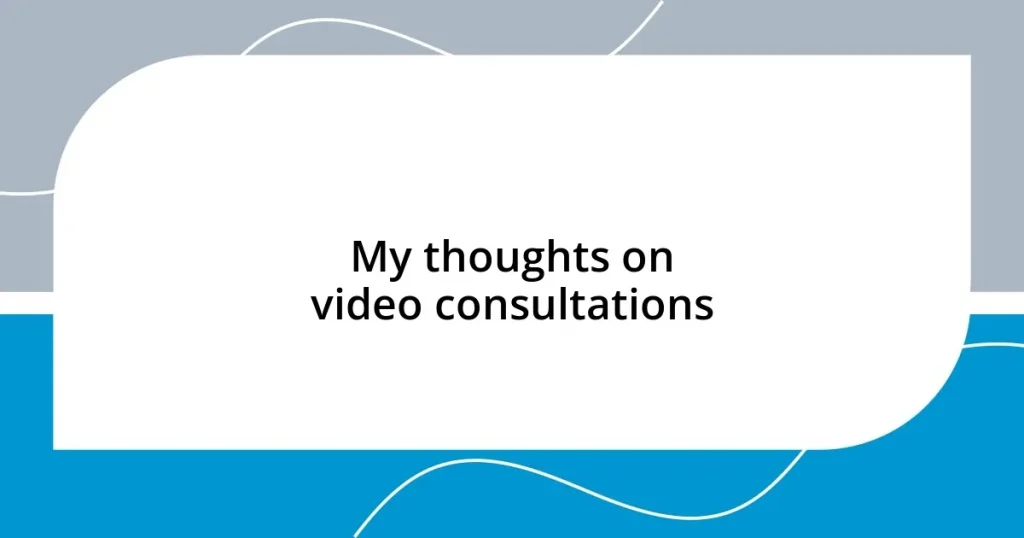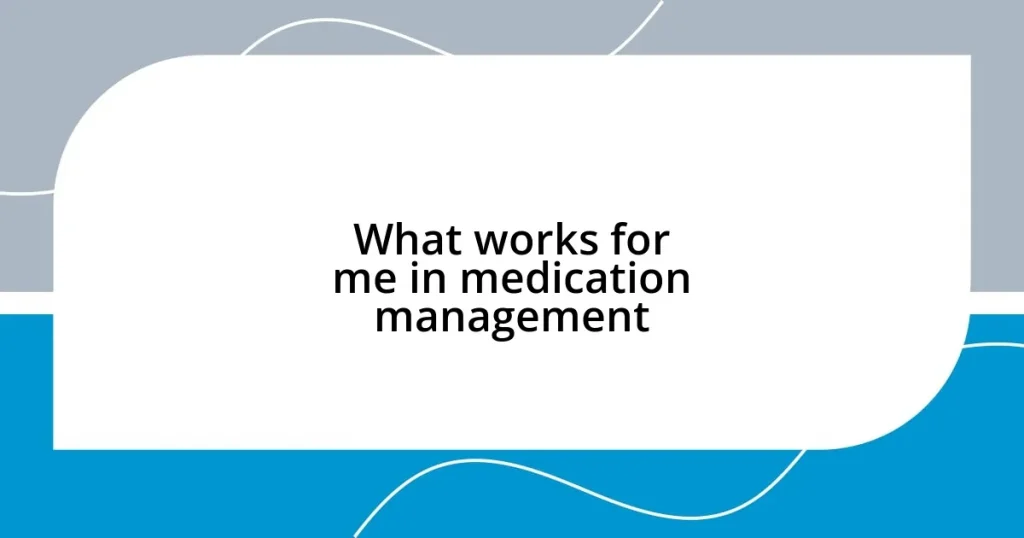Key takeaways:
- Acknowledging and sharing feelings can deepen relationships and foster a supportive environment.
- Using techniques like journaling and mindfulness can help enhance emotional awareness.
- Active listening transforms conversations by allowing for deeper emotional connections.
- Utilizing assertive communication techniques, such as “I” statements, promotes constructive dialogue.
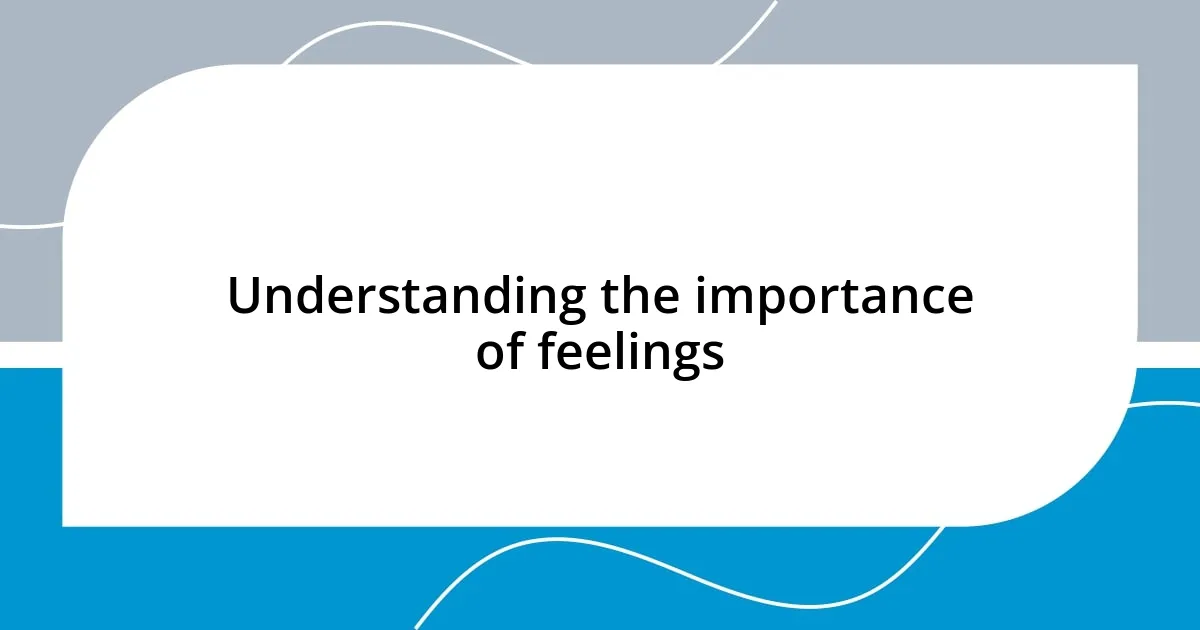
Understanding the importance of feelings
Feelings are the lens through which we experience life; they inform our decisions and shape our relationships. I remember a time when I brushed aside my emotions, believing they were a sign of weakness. Can you relate? It took a difficult situation to realize that acknowledging my feelings was, in fact, a source of strength.
When I finally embraced my emotions, I discovered a new dimension to my interactions. For instance, sharing my nervousness before a big presentation not only made me feel lighter but also invited connection from others. It’s fascinating how opening up about my feelings encouraged others to share their own — it created a ripple effect of understanding.
Understanding feelings deepens our capacity for empathy, which ultimately enriches our relationships. As I learned to communicate my emotions openly, I found that my friends began doing the same. Have you noticed this in your life? Recognizing the importance of our feelings fosters a supportive environment where genuine conversations thrive.
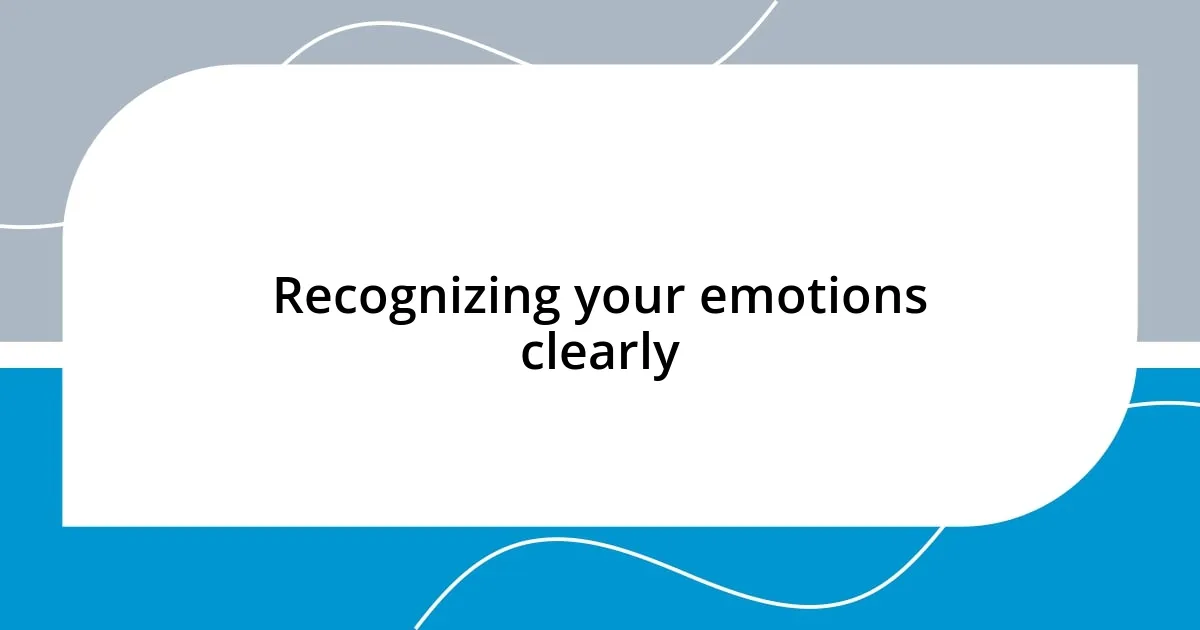
Recognizing your emotions clearly
Recognizing emotions clearly is an essential first step in effective communication. I vividly remember a situation where I felt a storm of emotions but couldn’t pinpoint what I was feeling. Was it anger, sadness, or frustration? I realized that taking a moment to pause and reflect helped me identify the confusion swirling inside me. It felt like peeling back the layers of an onion — each layer revealed a different aspect of my emotional state.
To enhance your ability to recognize emotions, consider these tips:
- Journaling: Writing down your feelings daily can bring clarity to what you’re experiencing.
- Check-in with Yourself: Set regular moments throughout the day to pause and assess your emotional state.
- Use Emotion Words: Expand your emotional vocabulary; instead of “bad,” try “frustrated” or “disappointed.”
- Body Awareness: Pay attention to physical sensations; tight shoulders may signal stress, while butterflies in your stomach might indicate excitement.
- Practice Mindfulness: This technique helps you stay present, allowing you to observe your feelings without judgment.
Engaging with these practices helped me uncover deeper emotional layers, transforming my self-awareness and improving how I connect with others.
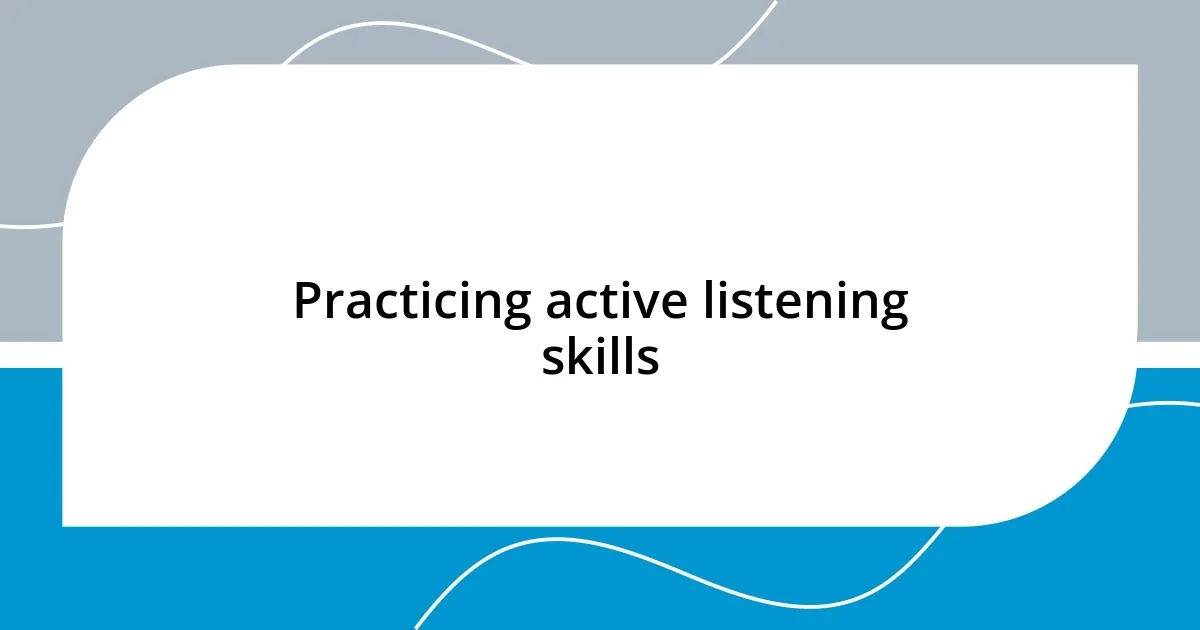
Practicing active listening skills
When I think about practicing active listening skills, I realize how critical they are to effective communication. In conversations where I truly focused on listening, I noticed I could absorb emotional nuances that went beyond mere words. I recall a moment when a close friend shared her frustration, and instead of jumping in to offer solutions, I simply listened. This act of being fully present created a space for her to express herself, and in doing so, she uncovered feelings she hadn’t even acknowledged before. It felt rewarding to witness that depth of connection.
Active listening isn’t just about hearing; it’s about engaging with what the other person is saying. I often find myself using techniques like nodding and maintaining eye contact, which show that I’m genuinely invested. One day, during a family gathering, I noticed my uncle struggling to articulate his feelings about work. I made a conscious effort to repeat back what he said for clarity, which encouraged him to delve deeper into his emotions. It was beautiful to see how my engagement not only brought his feelings to the forefront but also bolstered the rapport between us.
As I’ve developed my active listening skills, I’ve found that asking open-ended questions is a real game changer. Questions like, “How did that make you feel?” can invite richer discussions. I remember a heartfelt conversation with my sister, where I gently probed about her recent life changes. It sparked a meaningful dialogue that allowed her to explore her feelings more broadly. I realized how powerful active listening can be, fostering an environment where emotions can flow freely.
| Active Listening Skills | Impact on Communication |
|---|---|
| Fully present | Allows for deeper connection |
| Engaging techniques (nodding, eye contact) | Shows genuine interest |
| Open-ended questions | Encourages richer discussions |

Sharing feelings with others
Sharing my feelings with others has often been a transformative experience for me. I recall a time when I hesitated to express my emotions to a friend, fearing it would disrupt our dynamic. But when I finally mustered the courage to share my vulnerability, I realized how liberating it felt. It was like lifting a weight off my shoulders, and it deepened our friendship in ways I never anticipated. Have you ever felt that surge of relief after opening up to someone? It’s incredible how vulnerability can bring people closer.
Looking back, I realized that sharing feelings isn’t just about unloading; it’s also an invitation for others to open up. There’s something profound about creating a safe space for dialogue. I remember during a particularly challenging week, I decided to share my struggles with a colleague. To my surprise, she responded with her own challenges, which led to a heartfelt exchange. It made me wonder — why do we often reserve our feelings, when sharing not only helps us but others too? Just knowing that we’re not alone can be incredibly comforting.
Every experience of sharing my feelings reinforces the idea that communication is a two-way street. After confiding in a family member about my stress, I noted how their empathy made a lasting impact on me. It sparked a conversation where both of us explored feelings we hadn’t previously discussed. I’ve come to understand that sharing isn’t merely about conveying emotions; it’s about fostering connections. Isn’t it amazing how one conversation can open the door to deeper understanding and support?
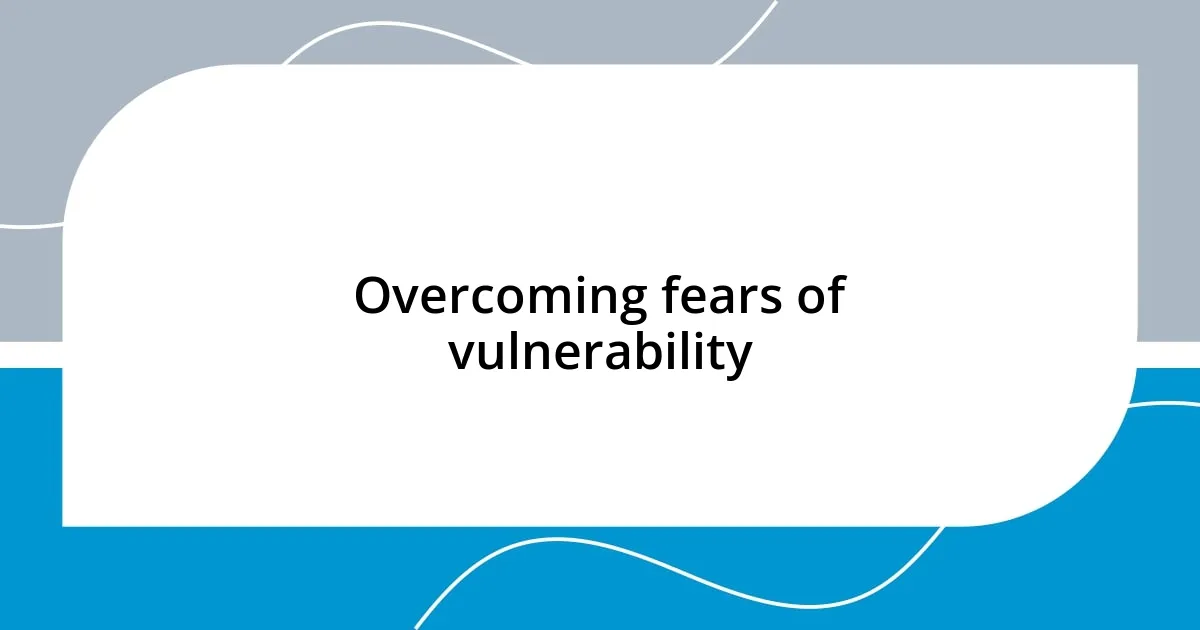
Overcoming fears of vulnerability
When I think about my own fears of vulnerability, I remember a specific moment that stands out. I was at a gathering with friends, and everyone was sharing their stories about hardship. I felt an urge to contribute but hesitated, scared that my own struggles wouldn’t resonate or podría be dismissed. Finally, I took a deep breath and shared a personal anecdote that had been weighing on my heart. The relief was instant, and to my surprise, not only did they listen, but they also opened up with their own experiences. It struck me then how vulnerability can truly forge connections.
It’s interesting how my perception of vulnerability has shifted. Initially, I viewed it as a weakness, a chink in my armor. But through some deep reflection, I’ve come to see it as an act of courage, one that invites others to connect on a deeper level. One afternoon, over coffee, I shared a moment of self-doubt with a mentor. Much to my astonishment, they revealed their own struggles from years past. In that exchange, an invisible wall crumbled, reminding me that everyone carries their burden; we simply don’t always show it.
I often wonder: why do we hide our true feelings when they can lead to such powerful conversations? I remember feeling totally uplifted after expressing my fears about an upcoming presentation. The response was overwhelmingly supportive, leading to a discussion about their own insecurities. Isn’t it fascinating how vulnerability not only liberates us but also encourages others to feel safe in sharing their feelings? Each time I break through that fear, I find a renewed sense of strength in my relationships.
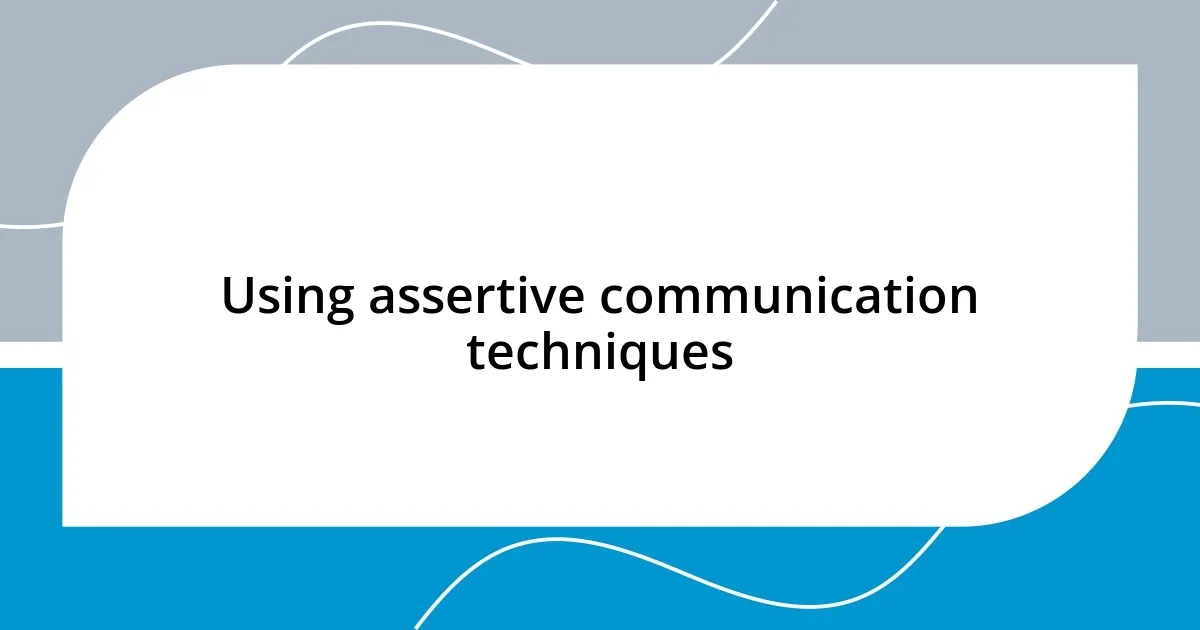
Using assertive communication techniques
One of the most valuable assertive communication techniques I learned is using “I” statements. For instance, instead of saying, “You never listen to me,” I found it more effective to express my feelings by saying, “I feel unheard when I’m speaking.” This small shift in language made a world of difference. It helped me convey my emotions without sounding accusatory, fostering a more constructive dialogue. Have you ever tried reframing your statements this way? It really invites the other person to listen rather than become defensive.
Another technique that worked wonders for me is being clear and specific about what I need. I remember a heated conversation about plans with friends where I felt overwhelmed by their expectations. Rather than letting my frustration simmer, I simply stated, “I need some time to think it over before making a decision.” This assertive approach not only alleviated my stress but also opened up a discussion about everyone’s needs. Have you ever felt a weight lift off your shoulders after expressing a need clearly?
Practicing assertiveness also involves being mindful of body language and tone. I used to struggle with this, often speaking too softly or avoiding eye contact when discussing my feelings. During one emotional conversation with a family member, I consciously worked on maintaining an open posture and steady voice. It was empowering to see how my physical presence complemented my words. Isn’t it fascinating how our body language can enhance our message? I realized that showing confidence helped reinforce my commitment to being genuinely heard and understood.
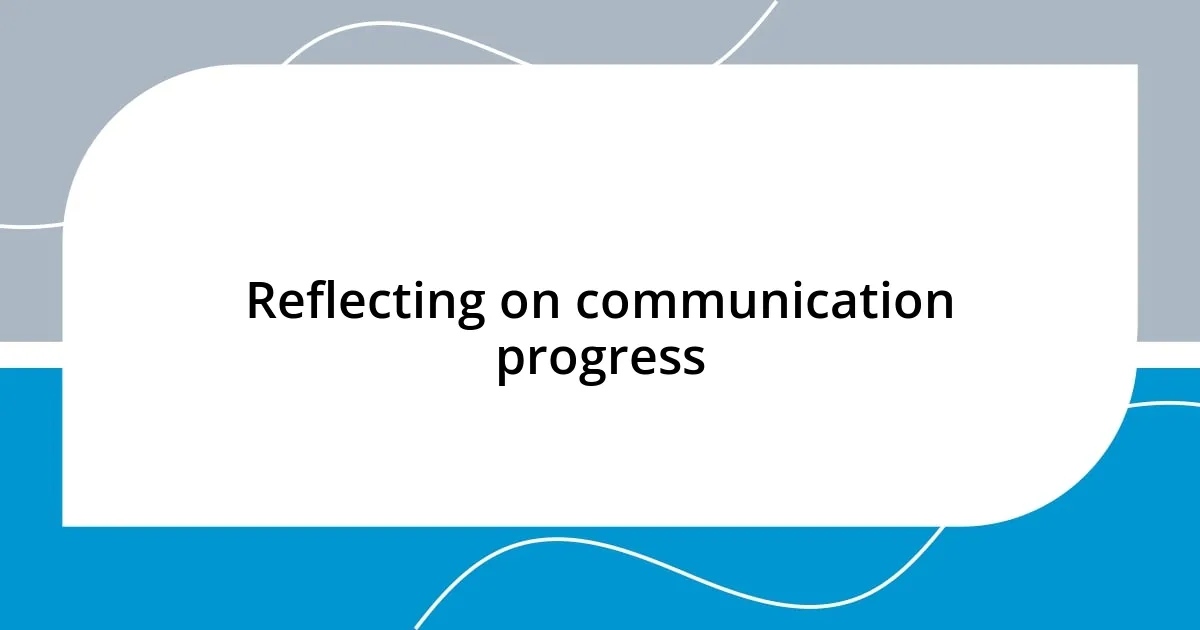
Reflecting on communication progress
Reflecting on my communication progress has been quite an enlightening journey. I recall a particularly challenging conversation with a close friend—not long ago, I struggled to articulate my feelings about a disagreement. Instead of retreating into silence, I took a deep breath and said, “I feel frustrated because I value our friendship.” The relief I felt as those words left my mouth was palpable; it was a pivotal moment that reminded me how expressing our emotions can actually deepen our connections.
Looking back, I can see the instances where I held back, allowing misunderstandings to fester. There were times I avoided addressing my feelings, thinking it would keep the peace. Yet, the irony is that it only created more distance. I remember a family gathering where I thought it would be easier to grin and bear a slight that hurt my feelings. But later, reflecting on that moment, I understood that sharing my truth could have led to a richer dialogue and a stronger bond with my family. Isn’t it ironic how fear of discomfort often leads to greater disconnection?
As I think about my growth, the weight of my words has transformed. I’ve learned that clarity in expressing emotions gives me a sense of ownership over my feelings. One evening, during a heartfelt conversation with someone I care about, I recognized that a simple “I’m feeling neglected” opened the door to a more profound discussion about our relationship. That conversation not only clarified my feelings but also brought us closer. It makes me wonder how many conversations in our lives could flourish if we simply found the courage to share our truths openly.











